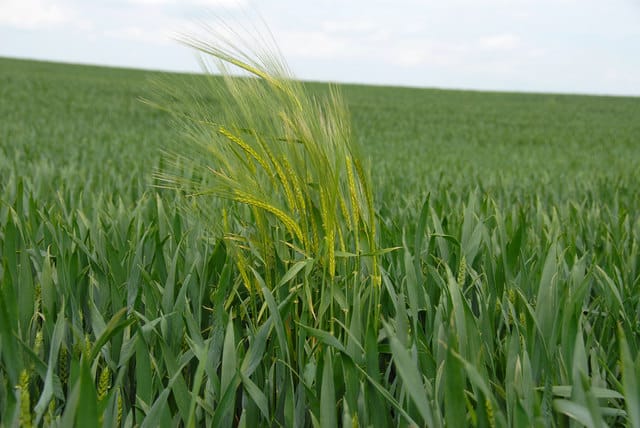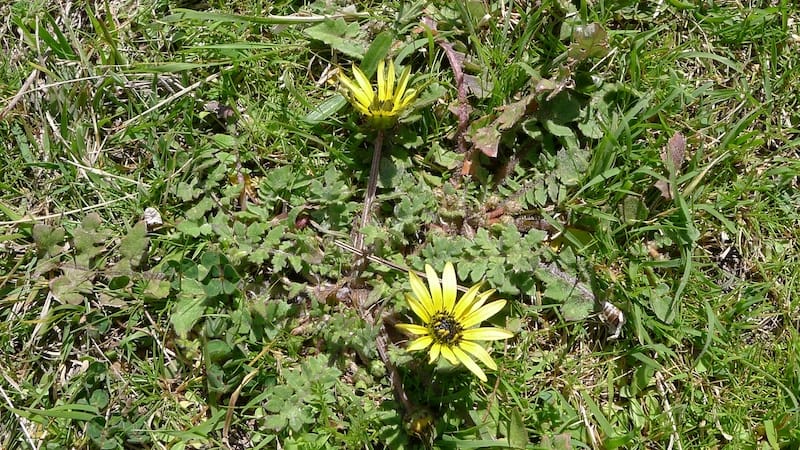Did you know that weeds are estimated to cost Australian agriculture more than a whopping $2.5 billion per year?
But the good news is that if you know how to spot these little critters and control them effectively, you could reduce your costs by a whole lot and improve the overall productivity in your farm.
Always remember to follow the 3D approach:
Deliberation: take stock of your weed problem and what you need to do to control it
Diversity: use the best tools that will suit your farm’s conditions and control your weeds
Diligence: managing weeds are an ongoing process, so continue to keep at it!
Today, we’re going to be discussing two types of weeds: Barley grass and Capeweed.
Barley grass
Barley grass is an annual grass weed. If there is a sufficient amount of autumn rainfall, it can germinate faster than other grasses and provide valuable autumn and winter feed even when it’s still in the vegetative stage.
Barley grass matures very early. Because of this, its overall dry matter (DM) is low.
Because the plant finishes its cycle and dies early, it produces unpalatable seed heads between early to late spring. If the weather allows for profitable growth, 99% of the seed produced in spring will germinate by the next autumn. The seeds are easily spread around by animals as a contaminant of hay and feed grains.
Barley grass usually emerges in areas of high fertility and in spots of the bare ground after ryegrass plants die.
How to identify barley grass:
The leaves of barley grass are usually a paler green than the leaves of other common annual grass weeds. They have a sparse covering of soft hairs and taper to one point.
You can spot barley grass seedlings by identifying the remaining parts of the seed that attach themselves to the root system.

Controlling barley grass
Controlling barley grass is quite a task due to its high resistance to group A & B herbicides. You must be familiar with the use of pre-emergent and post-emergent herbicides to control your weeds, but this is expensive. A better, long-term approach would be to use methods that don’t entirely depend on herbicides.
Some of the non-chemical options to manage barley grass are to increase crop competition by reducing the row spacing, increasing sowing rate and changing row direction.
The Minnipa Agricultural Centre undertook some trials, and these were their key findings:
- Reducing the row spacing from 30 cm to 18 cm lead to a 42% decrease in lower grass weed dry matter.
- Barley grass DM was 57% lower, and it had a higher seeding rate which increased grain yield too.
- There were also small but clear benefits with E-W sowing, as compared to N-S sowing.
- Increasing the seeding rate of barley in barley grass benefits yield and weed seed carryover
Capeweed
Capeweed, with its official name ‘Arctotheca Calendula’ is a weed that’s native to South Africa and naturalised across the southern part of Australia and New Zealand.
It is an annual broadleaf weed and germinates during autumn and winter. This weed can adjust with lesser rainfall than what is usually required for pasture germination. It competes with pasture seedlings in autumn.
Capeweed usually tends to take over bare areas in a pasture sward. Like we mentioned earlier about its ability to adjust with lower levels of rainfall, capeweed can tolerate conditions of drought much, much better than most other crops and pastures.
So how does it survive spells of low rainfall? The seeds are covered with woolly, fluffy hairs. This attracts moisture and reduces desiccation.
In certain conditions, it can remain dormant for more than two years, depending on how deeply the seed is buried and also based on the ecotype.
Identifying capeweed
Capeweed is a stemless, prostrate, annual herb that germinates during the autumn and winter seasons. It has hairless cotyledons that are shaped like tiny clubs. The first two leaves always grow a pair and are shaped like spears. They could be scalloped too.
The leaves that follow the first two leaves grow singly are deep-lobed with a round apex. The leaves of the capeweed are succulent, the upper surface is hairy, and the lower surface is covered with white hairs.
The flower heads are a bright yellow colour with blackish-purple disc florets. Pinkish-brown fully hairs cover the seeds.

Why is it called a weed?
If capeweed were in a classroom, it would be the student in the first row that always raises his/her hand to answer the professor’s questions!
Capeweed is super competitive and is always trying to get the lion’s share of water, nutrients and light, thereby reducing the yield production in crops like cereals, pulses or canola. Capeweed emerging in early autumn become large, even before the crop is sown, and then competes with the crop.
A capeweed plant growing in a suitable environment can produce up to 4000 seeds. At the rosette stage, it can grow to 600 millimetres in diameter, and it can easily outshine any plant that is shorter than it.
These large plants are difficult to control even with the help of herbicides and usually have to be transplanted before sowing. Even then, their re-emergence with the crop plants can crowd the pastures and decrease crop yield.
The dangers of capeweed
If capeweed has been sprayed with hormone-based herbicides or after nitrogen applications and then grazed by animals, it can lead to nitrate poisoning in cattle. The nitrate is easily absorbed from the rumen to the bloodstream. This leads to anaemia which can kill the animals.
It can also cause something called ‘Nasal Granuloma’ which occurs in cows that inhale air that has high concentrations of capeweed pollen for long periods.
How to control capeweed
If measures are taking to control capeweed right from the start, it can be eradicated faster, and much easier than barley grass.
There are different ways to control capeweed, depending on the size of the infestation. An integrated weed management plan is important to help manage the spread of capeweed in our pastures:
- Herbicide-tolerant crops: Good levels of control can be achieved in triazine-, imidazolinone- and glyphosate-tolerant crops
- Inversion ploughing: You can use skimmers to make sure the seeds are buried deeply – but this is not suitable for all types of soil.
- Delayed sowing:This works very well on paddocks that are undisturbed
- Fallow and pre-sowing cultivation
- Knockdown herbicides: for fallow and pre-control sowing usually have good control overactive and unstressed weeds. But they have poor control of early germinated weeds that have lost leaves because of drought in the early season.
- Grazing heavily: in winter to ensure the emergence of flowers uniformly and then graze or respray survivors. You can also rotationally graze pastures and then use spray-grazing if necessary, in pastures that are clover-based.
- Herbicides: Small infestations can be treated by applying Vigilant II to 50% of the leaves. More severe infections can be treated with foliar sprays. But remember to rely on a farm advisor or expert who will suggest the best method to control capeweed on your farm.
Head to Pasture.io to read up on the common pasture diseases, pests and weeds which will give you just the information you need to know what you definitely don’t need on your farm!
Until we meet again, Happy Farming!
- The Dedicated Team of Pasture.io, 2020-09-28